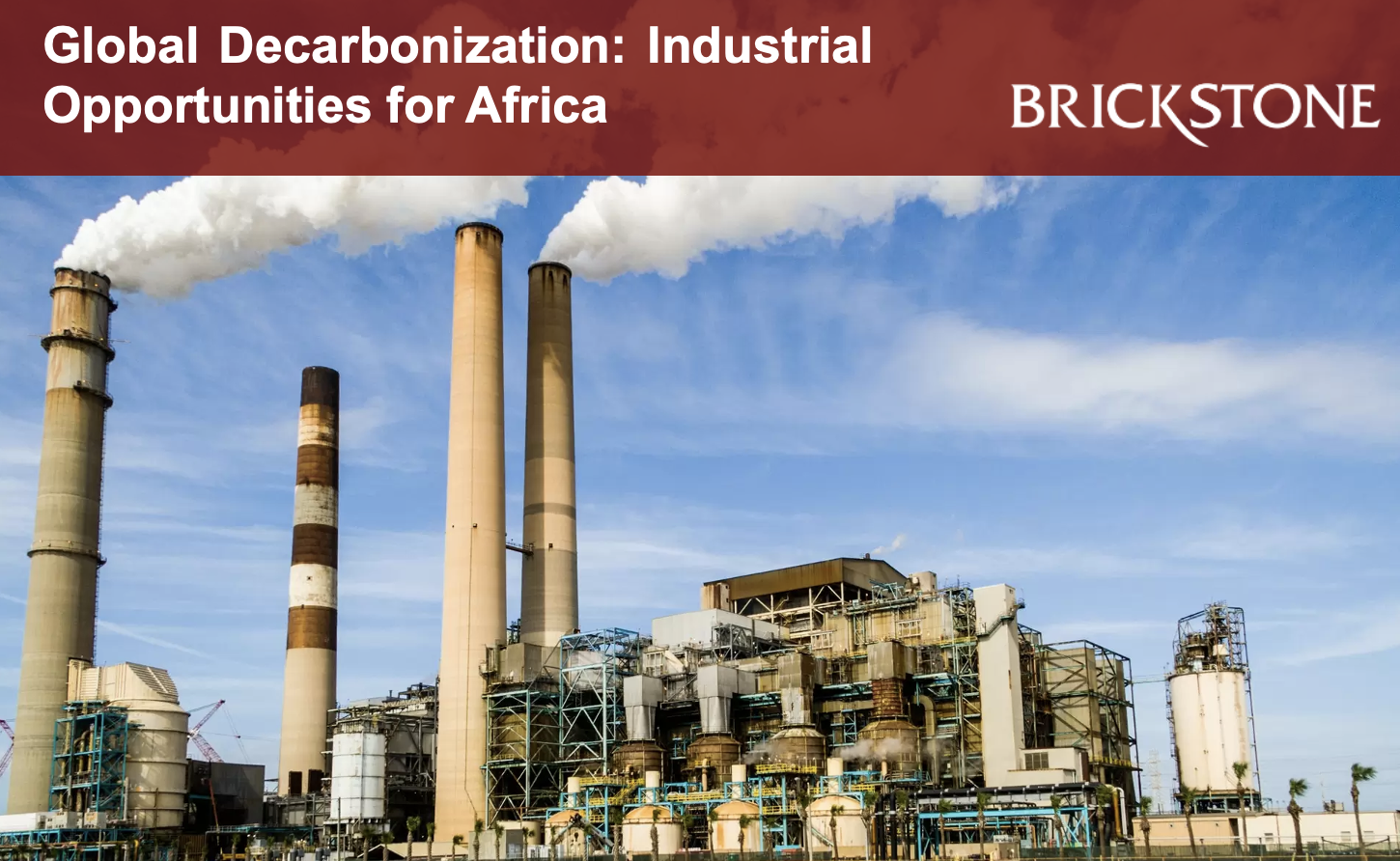Global Decarbonization: Industrial Opportunities for Africa
The industrial sector is a vital source of wealth, prosperity, and social value on a global scale. Industrial companies produce about one-quarter of global GDP and employment, and they make products and materials that are integral to our daily lives. Unless there’s global decarbonization, the world will struggle to reach the GHG reduction targets of 80 to 95 percent that governments set under the Paris Agreement of 2015, while millions of lives and national economies will remain at risk.
This article by Brickstone Africa reviews Brookings’ publication on the need for global decarbonization and the industrial opportunities it posits for Africa.
Global Decarbonization & Industrial Opportunities
Global decarbonization is happening and will be stepped up as the impacts of climate and weather extremes threaten social and economic systems worldwide. Already, we are seeing the deployment of huge quantities of renewable energy in advanced economies, and investments earmarked to make green energy transitions feasible.
Decarbonization is the process of significantly reducing or eliminating carbon dioxide and other GHG emissions that result from human activity. The pathway to global decarbonization can vary sector by sector due to the differences in processes and materials in different industries, but achieving decarbonization will require a clear vision for what the time frame looks like and what steps are necessary for each industry.
Countries that lag behind in low carbon technological innovations stand to lose, both in terms of the health and social co-benefits that come with the deployment of clean infrastructure, as well as the economic co-benefits that come from manufacturing the technologies of the future. Africa needs to pay close attention to the opportunities that lie.
As the world pursues low emissions ambitions, the demand for critical minerals including lithium, cobalt, and nickel will increase six-fold by 2040. Africa holds considerable resources vital to a clean energy future, which includes commodities essential in renewable energy generation technologies and battery-associated materials.
This presents transformative potential for Africa’s economic growth, employment, welfare, and wider sustainable development. For example, the Democratic Republic of Congo (DRC) is known to have 50-70 percent of global reserves of cobalt, and South Africa and Gabon have nearly 40 percent of global manganese reserves. Countries such as Zimbabwe and Namibia have among the largest reserves of lithium globally.
However, if Africa is to avoid repeating past errors, its role in the global decarbonization journey needs to be broadened beyond mineral extraction. Converting raw resources into tangible value-added opportunities in downstream activities is crucial. It may not be feasible to localize all segments of the value chain in the short-term, but serious planning and preparation are required to mitigate the risks of having Africa locked out of the green manufacturing value chain.
This requires bold industrial policies and strategies to create domestic demand, opportunities for value-added exports, and doing away with the business-as-usual model of mineral and raw material extraction.
Some of these policies and interventions could include:
- African governments must invest in national capacity to produce high quality human resources and institutions. Countries that have the capability and capacity to navigate the changing technological and regulatory environment are well positioned to spur greater investment, and to develop local content policies that are in line with their capabilities and aspirations.
- Regional industrial policy coordination. A single country cannot hope to industrialize without stronger regional synergies. As such, building cross-border, regional value chains can offer a pragmatic framework to boost collaboration and attract investment in downstream activities. This would involve trade and cooperation between countries based on their comparative advantage, such that some countries provide key mineral inputs while others manufacture technologies.
Read more here.






